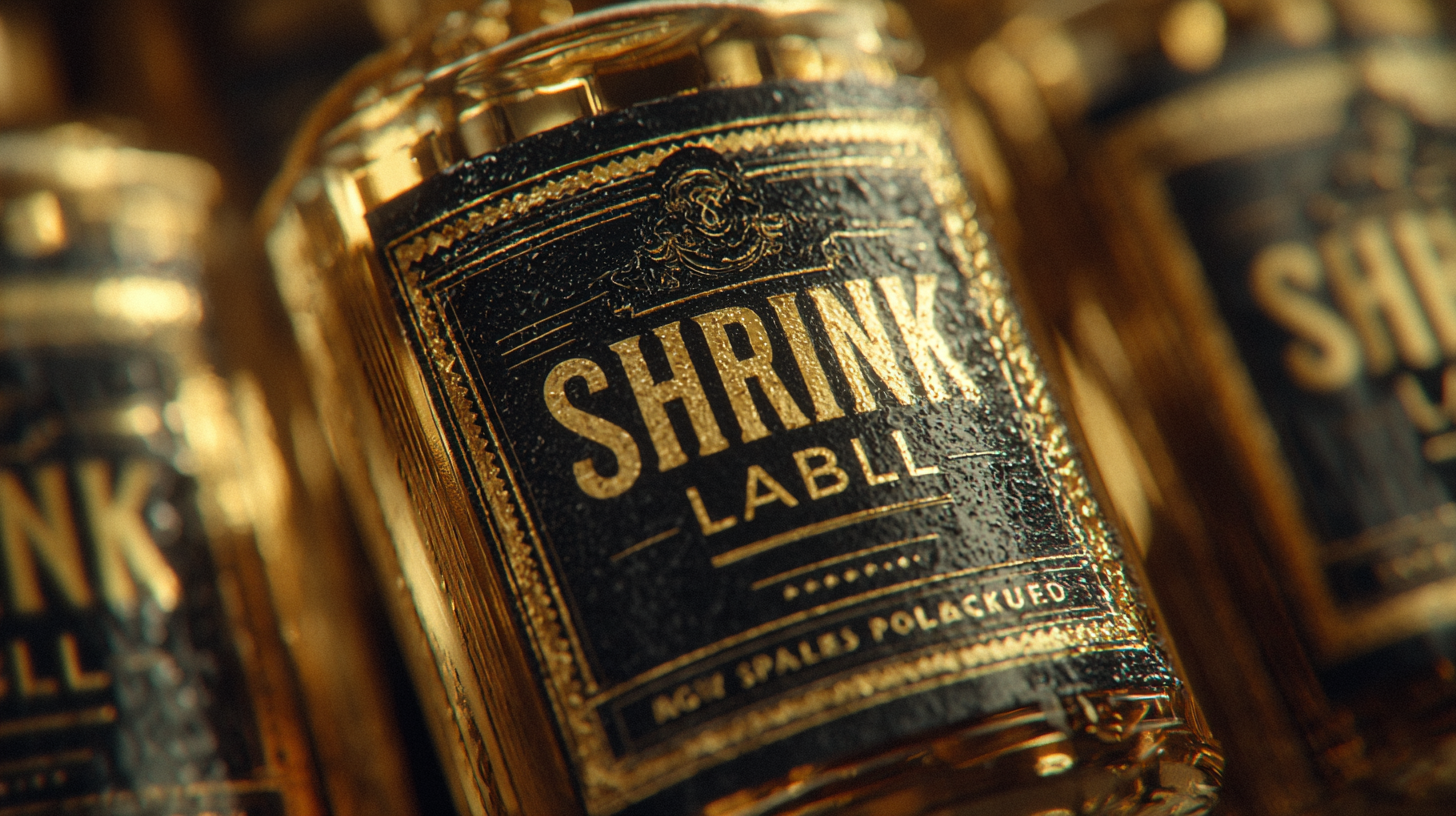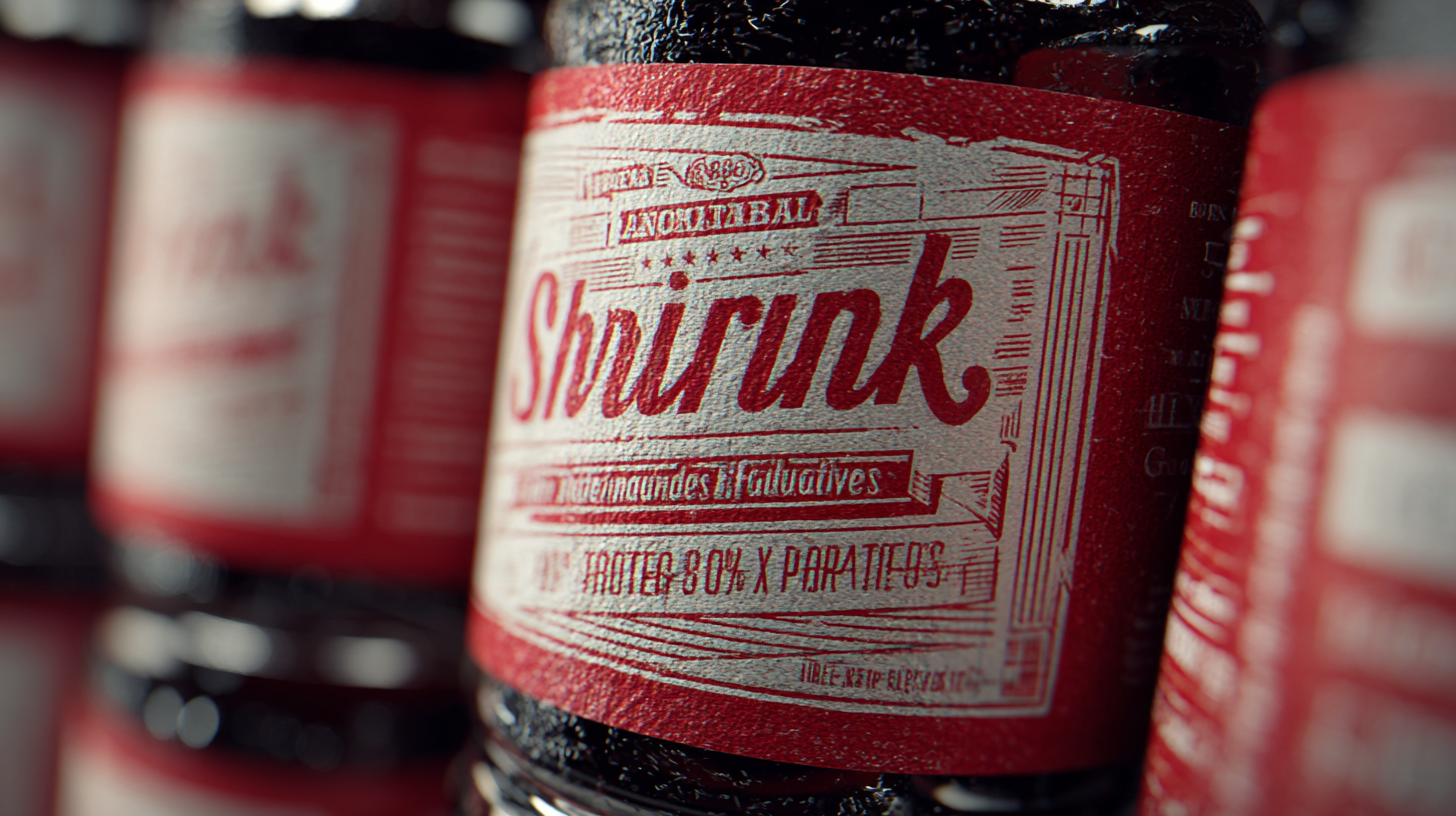Exploring Innovative Alternatives to Best Shrink Labels for Packaging Solutions
As the packaging industry continues to evolve, innovative alternatives to traditional shrink labels are emerging, driven by advancements in technology and increasing consumer demands. According to a recent report by Smithers Pira, the global shrink sleeve label market is estimated to reach $7.7 billion by 2025, highlighting the significant role that shrink labels play in the packaging landscape.
However, with growing environmental concerns and the push for sustainable practices, manufacturers are increasingly seeking solutions that not only provide functionality but also align with eco-friendly initiatives. This blog will explore the cutting-edge alternatives to shrink labels, assessing their potential benefits and drawbacks, and providing a comprehensive checklist for industry professionals looking to stay ahead of the curve in the ever-changing packaging solutions market.
Innovative Materials Redefining the Shrink Label Industry in 2023
The shrink label industry is undergoing a significant transformation in 2023, driven by the introduction of innovative materials that enhance both functionality and sustainability.
According to a recent market research report by Smithers Pira, the global market for shrink labels is expected to reach
$21.3 billion by 2025, growing at a CAGR of 5.2%. This growth can be attributed to the rising demand for
eco-friendly packaging solutions, as brands increasingly prioritize sustainability in their operations.
One of the notable innovations is the use of bio-based materials derived from renewable resources, which not only reduce dependency on fossil fuels but also minimize the carbon footprint of packaging processes.
For instance, PLA (Polylactic Acid) films, which are made from corn starch, have gained traction due to their compostability and excellent printability.
Additionally, advancements in technology have led to the development of thinner, more durable shrink films, allowing for better shelf presence while using less material.
Reports show that these innovative materials are redefining the way brands approach packaging, prompting a shift towards more responsible and efficient options in the shrink label segment.

Current Market Trends: Shift Towards Sustainable Packaging Solutions
As the global market increasingly shifts towards sustainability, the packaging industry follows suit with innovative alternatives gaining traction. The bulk container packaging market is projected to reach a staggering $3.635 billion by 2025, with an impressive growth trajectory forecasted to increase to $6.778 billion by 2033. This represents a robust compound annual growth rate (CAGR) of 8.1%. Such growth is driven by consumer demand for eco-friendly packaging solutions that minimize environmental impact and promote circular economy principles.
Moreover, the green packaging film market is expected to play a pivotal role in this transition, encompassing various materials such as biodegradable plastics, recycled plastics, and compostable films. The report indicates not only a shift in material selection but also a diversification in applications across sectors, including food packaging, beverage packaging, and industrial uses. By 2032, this segment is set to meet the increasing demand for sustainable alternatives, reinforcing the industry's commitment to reducing its carbon footprint while catering to an environmentally-conscious consumer base.
Technological Advancements in Shrink Label Production Techniques
The advancement of technology has significantly transformed shrink label production techniques, offering innovative alternatives that enhance efficiency and sustainability in packaging solutions. Modern shrink label processes now incorporate state-of-the-art digital printing, allowing manufacturers to achieve high-quality graphics and vibrant colors while reducing waste. This shift not only improves the visual appeal of products but also enables quicker turnaround times, meeting the fast-paced demands of today’s market.

In addition to digital printing, the integration of eco-friendly materials into shrink label production is gaining momentum. Innovations such as biodegradable and recyclable films ensure that brands can adopt sustainable practices without compromising the integrity and durability of their packaging. Moreover, advancements in shrink sleeve application equipment have improved precision and speed, reducing the chances of errors and minimizing material usage. As companies increasingly prioritize sustainability and efficiency, these technological advancements in shrink label production are paving the way for a more responsible and innovative future in packaging.
Comparative Analysis of Performance: Shrink Labels vs. Alternative Solutions
In the realm of packaging solutions,
shrink labels
have long been a popular choice due to their ability to conform tightly to product shapes, enhancing shelf appeal and providing a secure seal.
However, as the demand for sustainable and cost-effective alternatives rises,
it is crucial to evaluate the performance of shrink labels against innovative solutions such as biodegradable wraps and flexible films.
These alternatives not only promise reduced environmental impact but also offer unique branding opportunities,
allowing companies to express their values through responsible packaging.
A comparative analysis reveals that while shrink labels are effective in providing a customized fit,
alternative solutions like plant-based films can deliver comparable levels of durability and protection.
Moreover, advancements in print technology allow these alternatives to boast vibrant designs without compromising on quality.
Businesses opting for eco-friendly options can appeal to a growing demographic of consumers who prioritize sustainable practices, potentially enhancing their market position.
As we explore these shifts in packaging dynamics, it’s evident that the choice between traditional shrink labels and innovative alternatives is not merely a matter of aesthetics,
but a strategic decision that impacts brand identity and environmental responsibility.
Consumer Preferences: The Rise of Eco-Friendly Labeling Options in Packaging
As consumer awareness around sustainability grows, eco-friendly labeling options are becoming increasingly popular in packaging solutions. According to a recent report by Smithers Pira, the global market for sustainable packaging is projected to reach $500 billion by 2027, with eco-friendly labels driving a significant part of this growth. Brands that adopt environmentally friendly labeling not only cater to consumer preferences but also contribute to reducing their carbon footprint.
Tip: When selecting eco-friendly labels, consider materials like recycled paper or biodegradable films that align with sustainable practices. Look for certifications such as FSC or Cradle to Cradle to ensure the labels meet environmental standards.
In addition to environmental benefits, the use of sustainable labels can enhance brand loyalty. Research from Nielsen indicates that 66% of consumers are willing to pay more for products from brands committed to sustainability. By implementing innovative labeling solutions that prioritize eco-friendliness, companies can attract conscientious consumers and distinguish themselves in a competitive market.
Tip: Engage your audience by communicating your sustainability efforts in your branding. Share stories about your eco-friendly practices on your packaging to connect with consumers and emphasize your commitment to the environment.